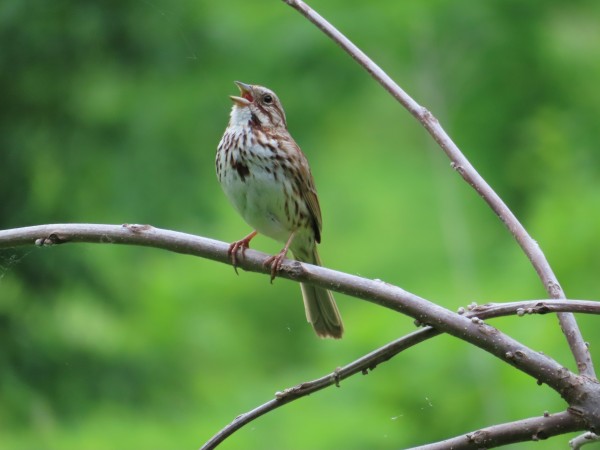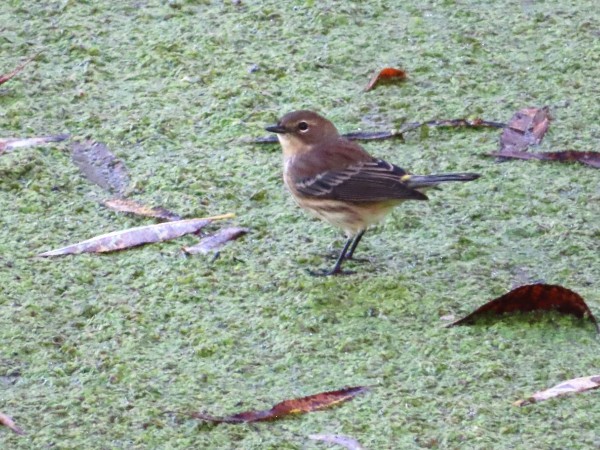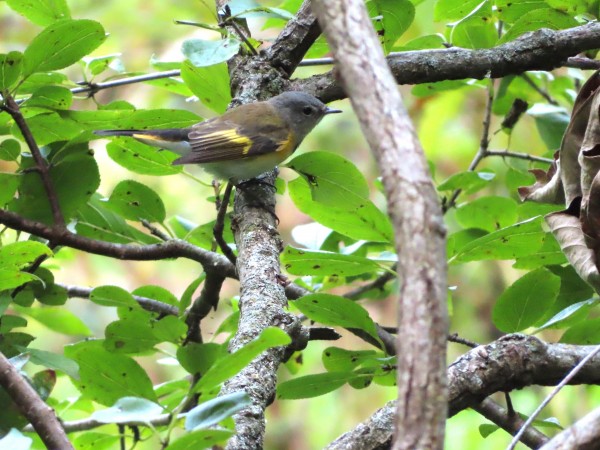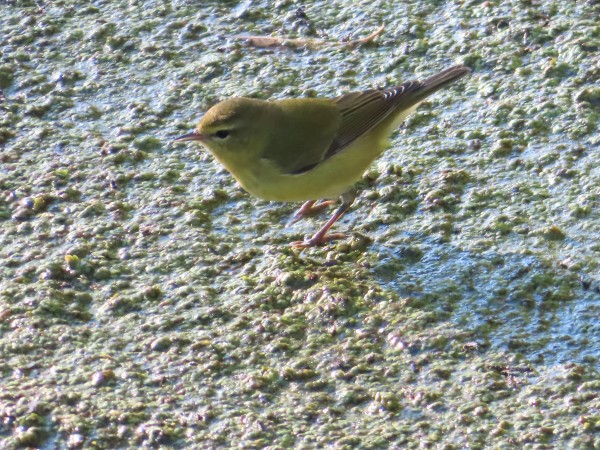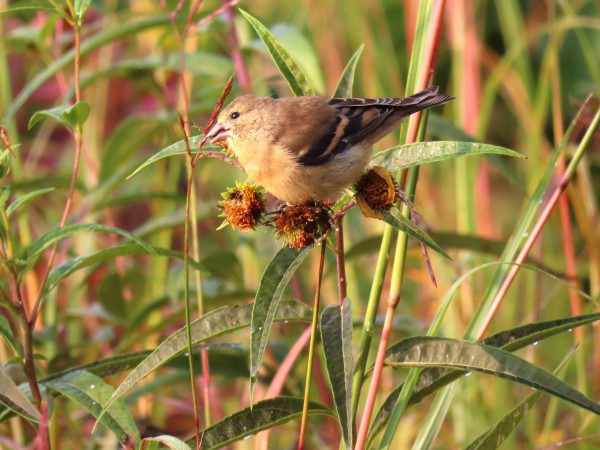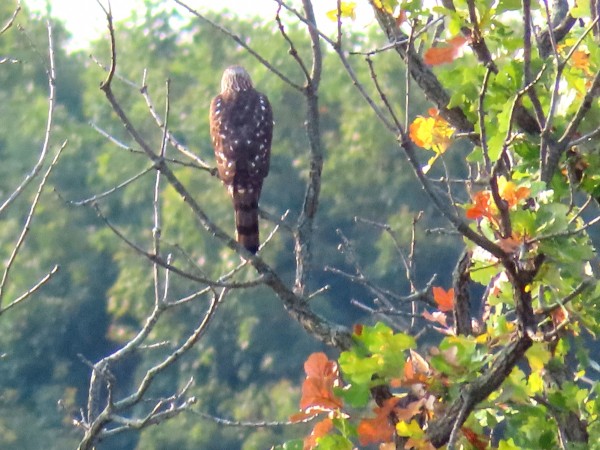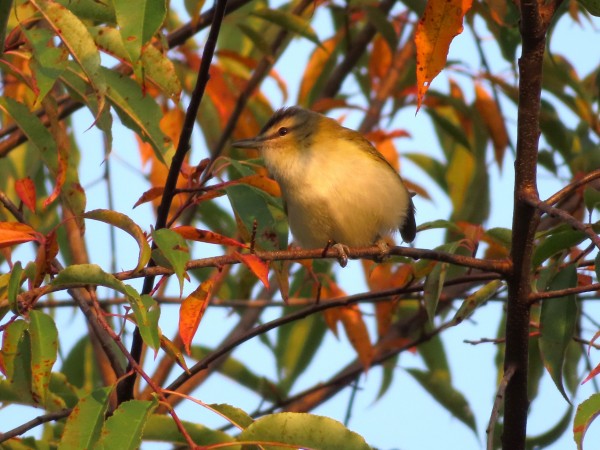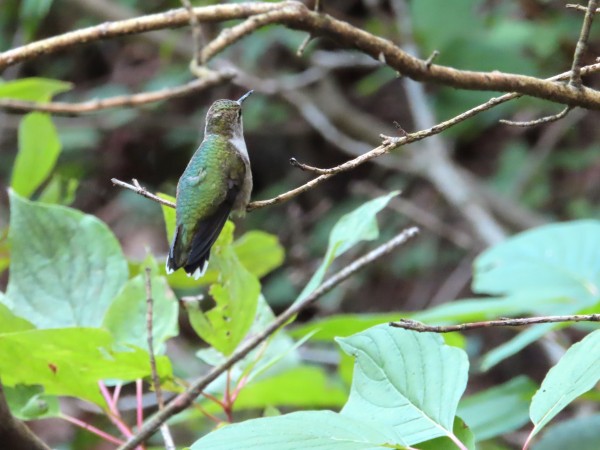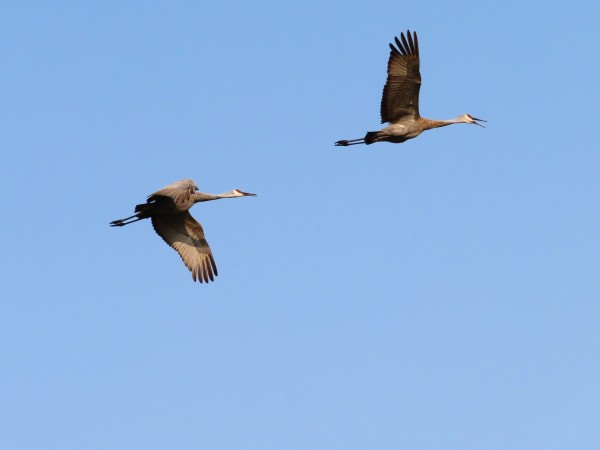Chuck's Birding Report #27
14 September - 22 September 2020
Dear fellow flock of birders,
Can you tell that fall is here? From a birder's perspective I can tell because some leaves are beginning to fall from the trees. As a birder we use our peripheral vision a lot when birding. The slightest movement off to the right or left could mean a bird is over there. We immediately turn our head and/or cast our gaze in that direction to see what bird it is that caught our eye. Now that the leaves are beginning to fall that movement annoyingly has the same effect. We turn our head and eyes to watch a leaf fall. Leaves in general fall straight down whereas birds seldom fly straight down so now you need to train your brain not to be fooled by something moving straight down. That takes time to learn. There are some sneaky leaves that like to float a bit more horizontally. I bite on those thinking they are birds. Argh! Luckily there aren't many of those. The good aspect of falling leaves is that there are fewer on the trees for the birds to hide behind.
So what have the birds been up to this past week?
Let's start with the warblers. Warbler migration is almost at its end. The clue for that is the arrival of Yellow-rumped Warblers. They are the first to arrive in the spring and the last to leave in the fall. I saw a high of 23 Yellow-rumped Warblers last Saturday. I was hoping to see about 30 species of Warblers this fall. I actually felt good about seeing 24 species especially since some of those species have very different, mostly drab, plumages in the fall making them difficult to identify. To see the really spectacularly colorful plumages we'll have to wait until next spring. I've attached photos of a Yellow-rumped Warbler, an American Redstart Warbler and a Tennessee Warbler. I wish I could show you other warbler photos but I am not good at photographing these fast moving birds. Oh, and lots of leaves on trees don't help either.
There are lots of American Goldfinches in the Arb. Sunday I saw over 40. They are eating all the seeds from the wildflowers that are now fading and full of seeds. I was walking on the trail going south from the pump house when I saw about 20 goldfinches on the trail picking up grit or seeds that had fallen on the trail. I was looking at each bird to see if any other species might be mixed in with the flock. All of a sudden a Cooper's Hawk came flying close over the top of my head from behind and then flew about three feet over the path and toward all the goldfinches. That caused the goldfinches to scatter in all directions just like a bowling ball scatters the pins at the end of an alley. The good part of the story is that the hawk went away empty taloned, that is if you take the side of the goldfinches. I've attached a photo of an American Goldfinch eating seeds and another of the back of the Cooper's hawk that struck out with capturing a goldfinch or rolled a gutter bowl.
The bird food for the day is still Gray Dogwood berries although some bushes have been stripped bare. I'm still seeing lots of Swainson's Thrushes and Red-eyed vireos cleaning up the remaining berries. There are other birds working those bushes too. I've attached a photo of a Red-eyed Vireo but not in a Gray Dogwood this time.
Sparrows are one of the next group of birds to start arriving. We've had Song Sparrows all summer. They sang a lot initially but became quiet and relatively hidden while nesting and raising young. After that they molted and again stayed quiet and hidden. A week ago I started seeing them again and they've begun to sing. They will be leaving soon. A photo of the Song Sparrow is attached. Today I saw two more migrant sparrow species in the Arb, a Lincoln Sparrow and a White-throated Sparrow. Watch for more migrant sparrows in the next few weeks.
I'm still seeing Ruby-throated Hummingbirds flying around the Arb. The males have already gone south. The females and young are still in the Arb and coming to my feeder too. They should be leaving in the next few weeks. A photo of a Ruby-throated Hummingbird is attached.
The pair of Sandhill Cranes that has made its home on Curtis Prairie all summer still flies out each morning to feed elsewhere. The pair flew right over me yesterday. Attached is a photo of the calling cranes flying over the prairie.
Here are some of the new migrants I saw this past week: a pair of Scarlet Tanagers both in their yellow-green winter plumages, a diminutive Ruby-crowned Kinglet too busy to stop and say hi, a Dark-eyed Junco thinking this cold weather was winter and a couple juvenile Yellow-bellied Sapsuckers without the red of the adults.
To close I would like to make our group aware of reports out of the UK that birds have been found caught in the disposable pandemic masks unable to fly or move in any way. If you Google Covid or pandemic masks and birds you should be able to find websites with photos of the problem. They suggest that separating the elastic straps from the masks before disposing them should alleviate the problem.
Stay well and good birding to all,
Chuck

